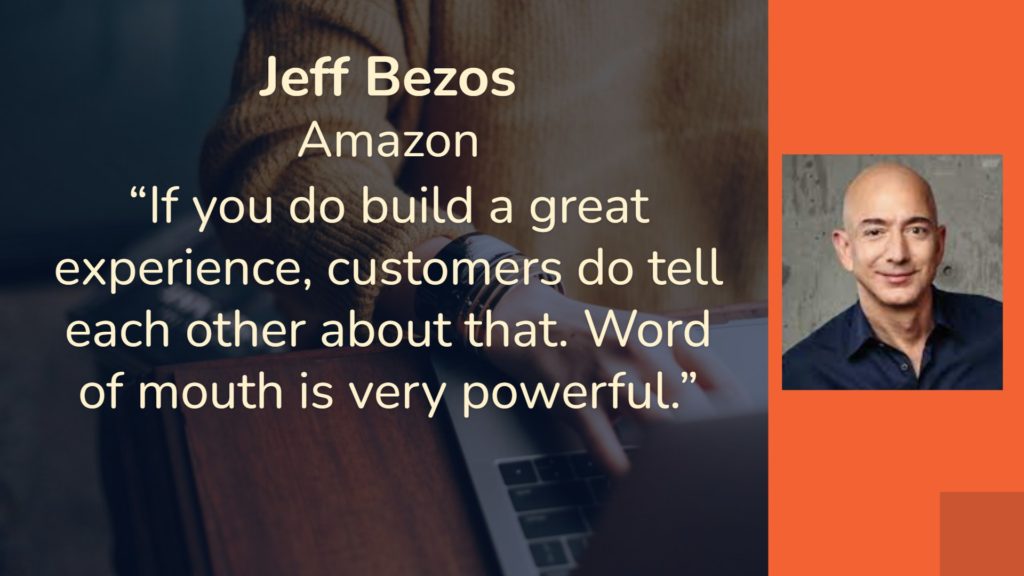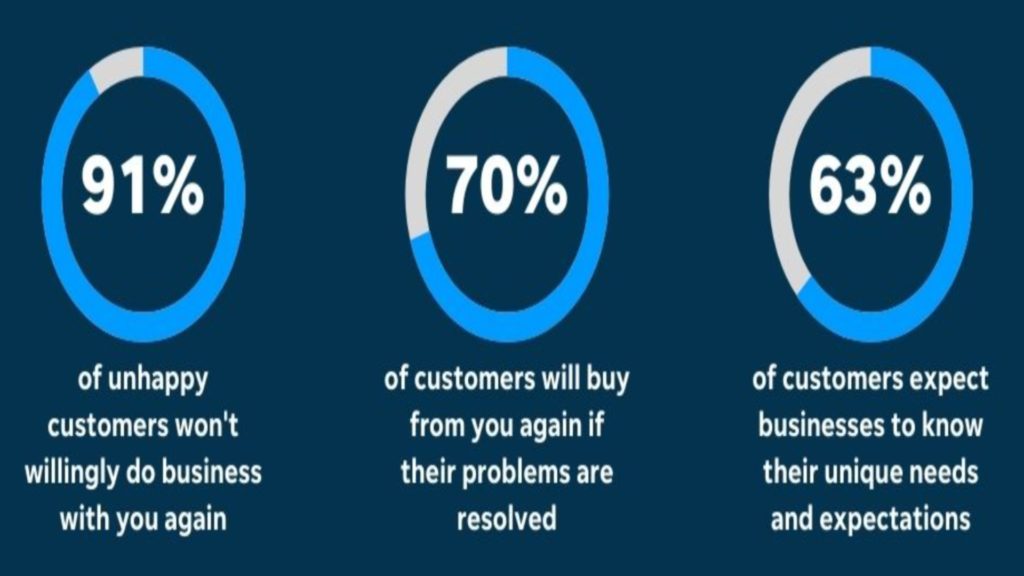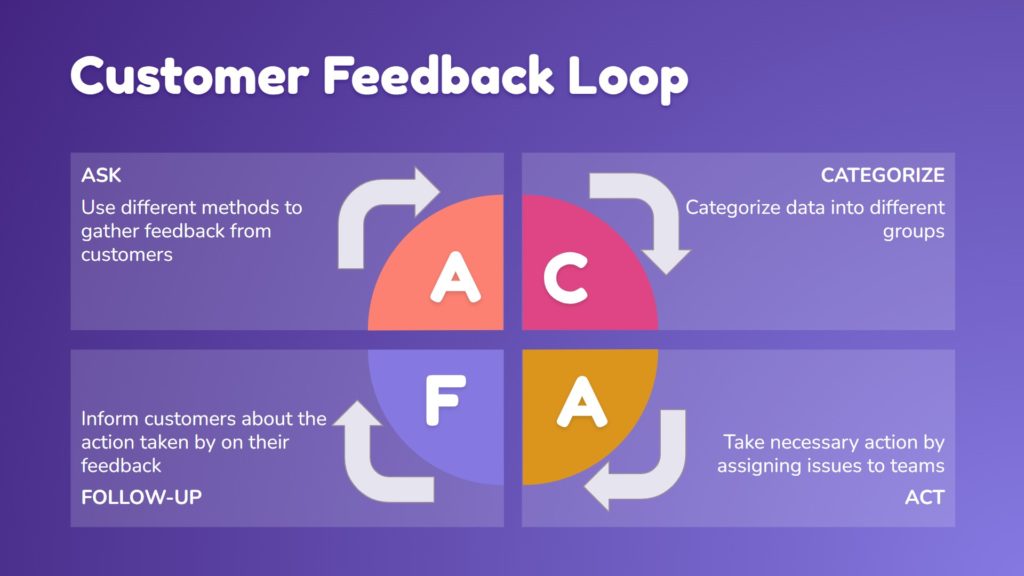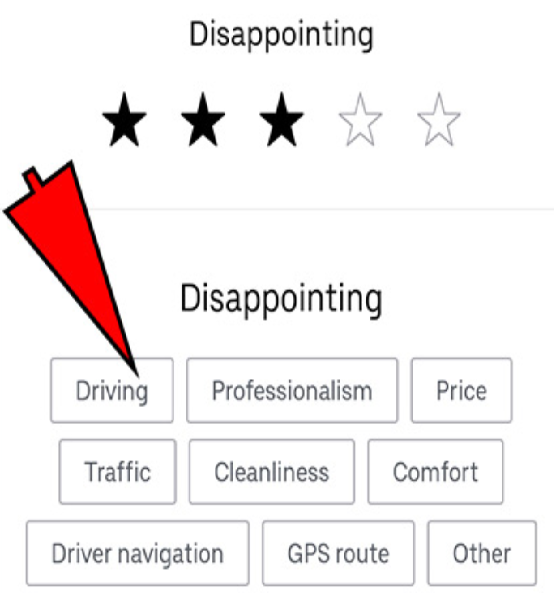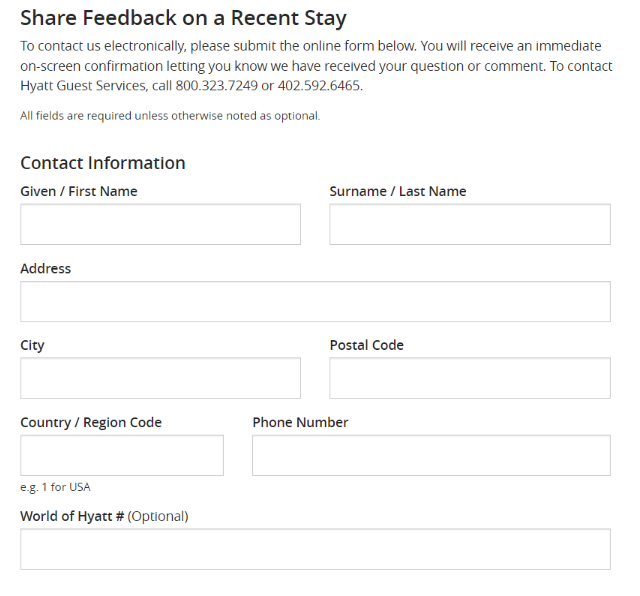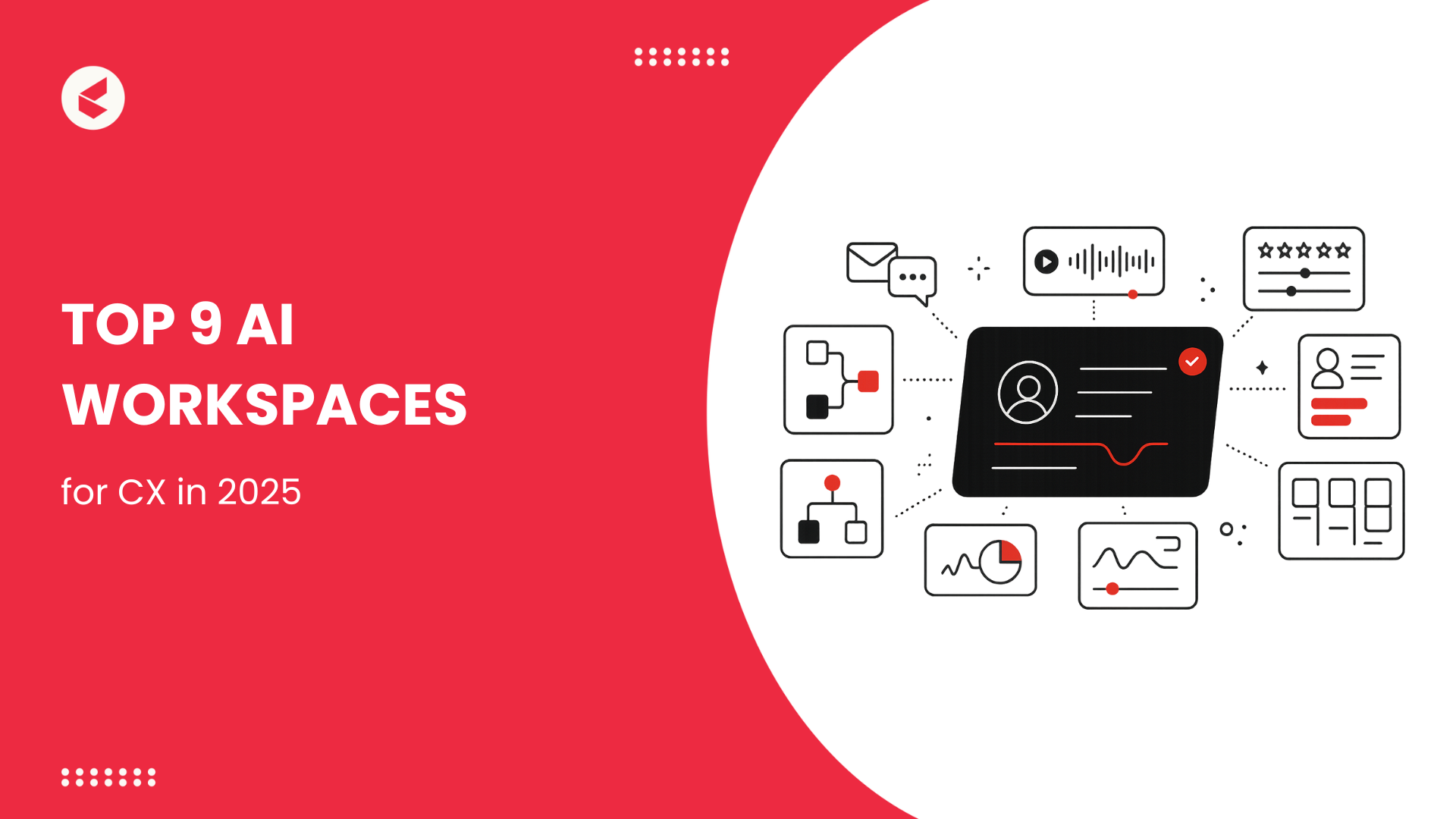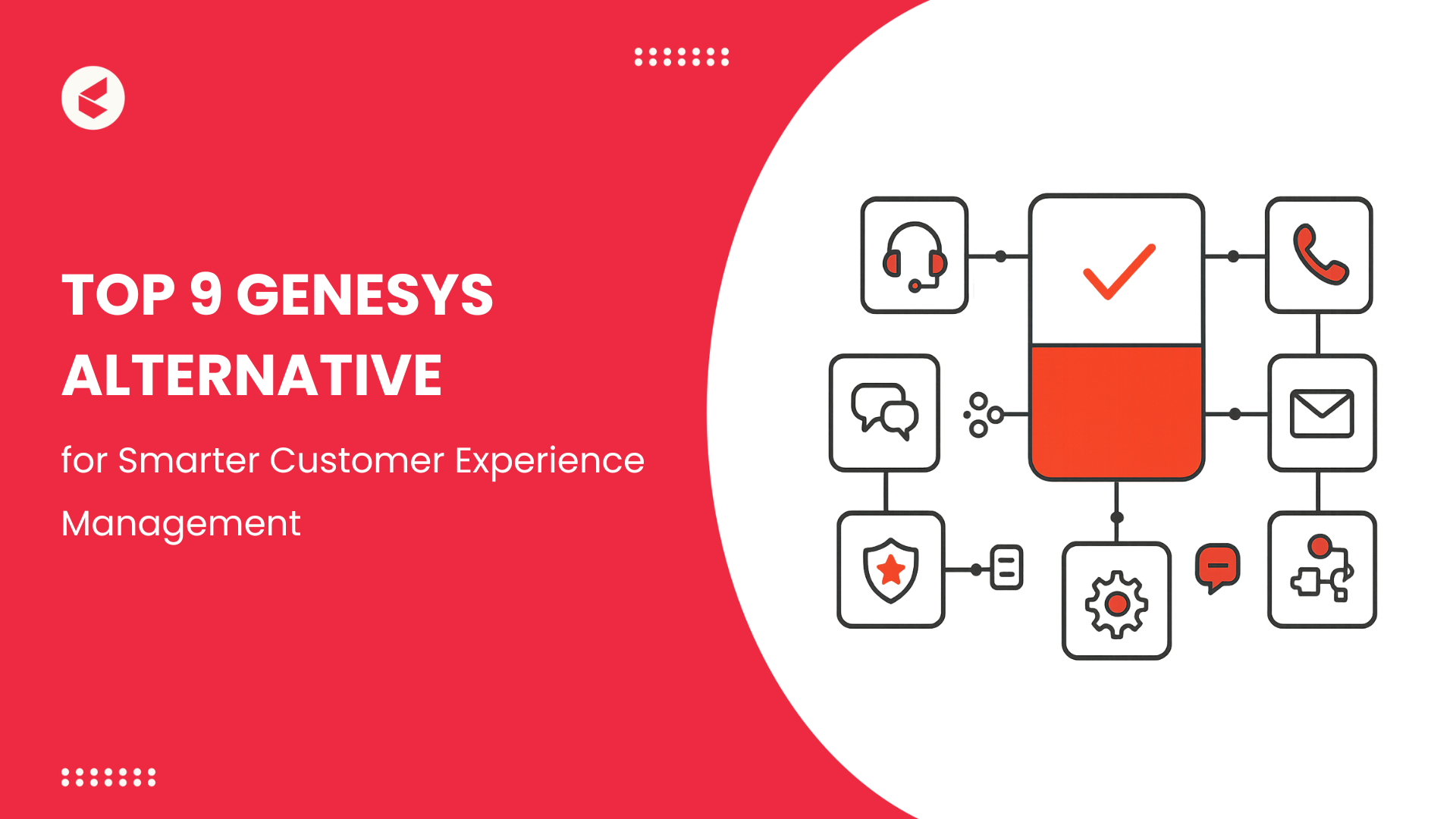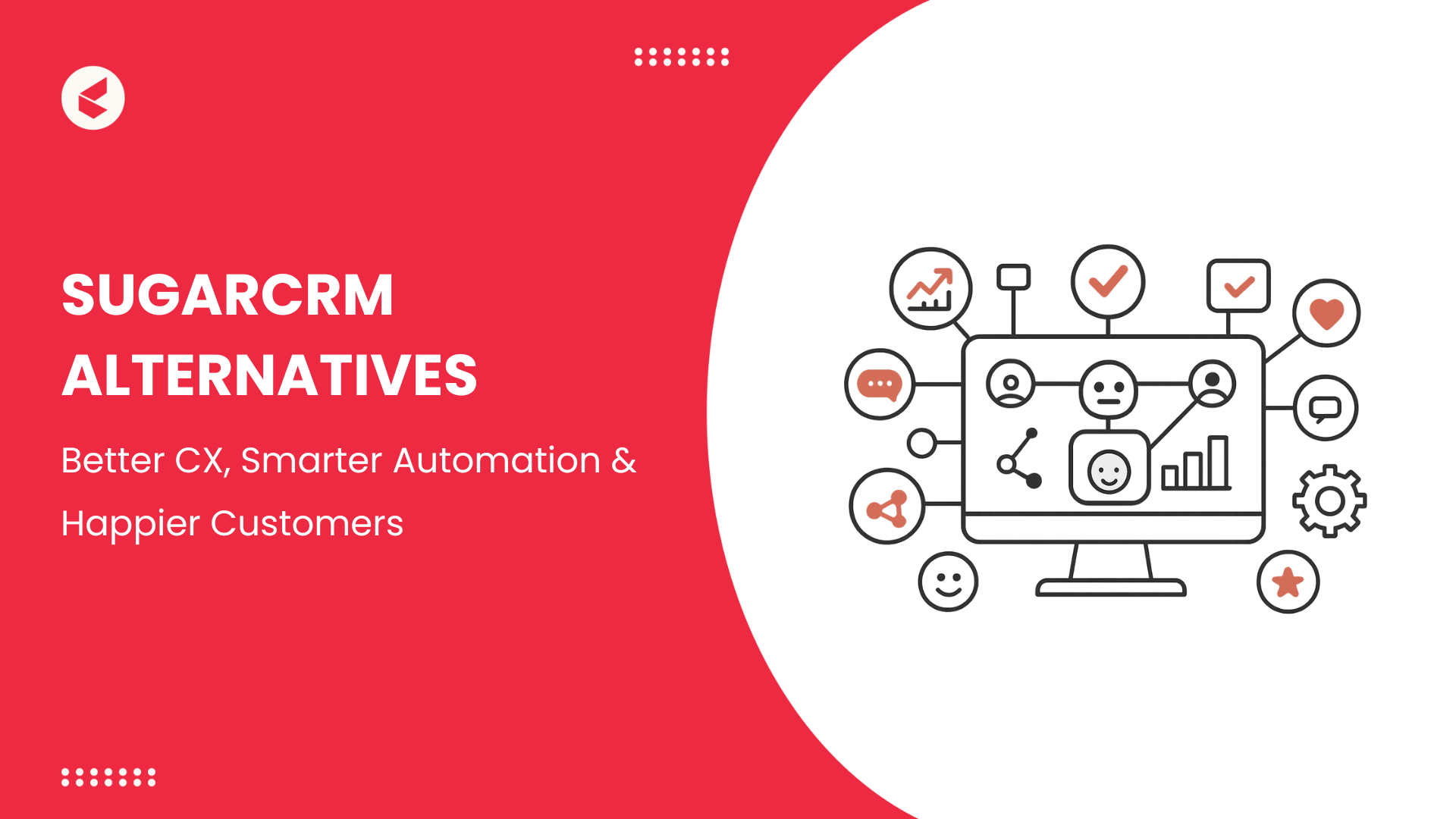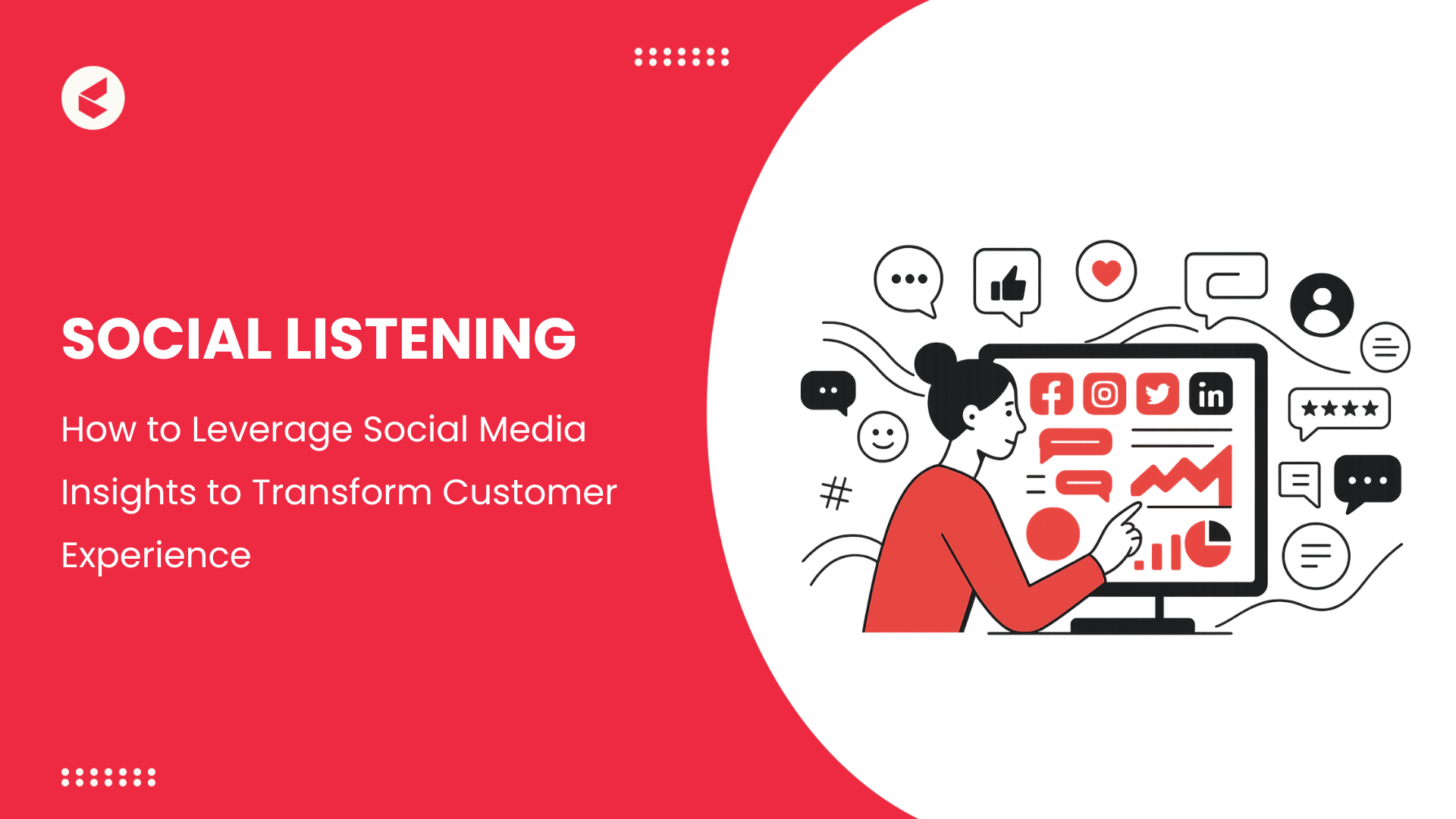Gather, share, and implement customer feedback to help your business grow….
That’s a terrific idea! Your customers tell you who you are and how you should be… You act on it, and the money keeps flowing in…
Well, if the basic concept of how customer feedback works impress you, let’s get down to the essentials of building a feedback system.
What is Customer Feedback? Why is it Important to Collect Customer Feedback?
Customer feedback is the information provided by customers about their experiences with your organization, product, or service.
Customer feedback is important to your business for a number of reasons.
1. Shows you directions for growth
Customer feedback is so influential that it has the capacity to steer brand roadmaps in the direction of delivering the greatest products and services. It’s also critical to collect input at each stage of the customer journey because this allows you to discover pain areas that cause churn.
2. Gives an opportunity to learn something new
Customer feedback analysis provides information to lead you to areas of development you would not have considered in your wildest thoughts. Knowing your customers’ opinions on your company can help you with everything from product development to marketing strategies in a highly competitive market.
3. Helps create loyal customers
Listening to customers is a fail-safe technique to gauge customer satisfaction, uncover bottlenecks, and figure out what is and isn’t connecting with your customers. Knowing what drives customers’ happiness can only help you build a loyal customer base.
4. Lets customers voice their opinions
Customers want to get the best bang for their buck when looking to purchase any product or service. When they do not obtain what they believe is worth their money, they choose to complain. Knowing what customers want can help your company to provide the right products/services and increase sales.
5. Helps you stay ahead of the competition
You should never stop listening to customer input if you want to stay ahead of the competition. If you fail to satisfy your customers’ requests, you may see a rise in the number of customers transferring to your competitors.
That said, having a digital customer feedback system is critical to keep track of customer input as customers’ needs and expectations constantly change. A customer feedback software can assist you in streamlining and automating the collection and analysis of customer input.
Types of Customer Feedback
The two main types of customer feedback are:
- Prompted: It is the feedback you seek from customers by reaching out (like customer surveys).
- Unprompted: It is the feedback that customers give you without you asking for it (like complaints or bug reports).
Read about the different feedbacks that fall under each category.
A. Prompted Customer feedback
1. Focus Groups
- This type of feedback is obtained from a focus group consisting of a small number of customers and a moderator. Customers are invited into the group for an in-depth conversation on a specific topic, which will be led by the moderator.
- Group conversations are a good technique to get people’s thoughts on a product or a business area that needs feedback.
- To aid in the improvement of the intended area of focus, use defined research objectives to categorize the opinion or feedback.
- Focus groups are particularly beneficial in the following situations:
- Recognizing how clients perceive your brand
- To help with input on advertising campaigns
- Investigating customer purchasing habits
- Generating ideas on how to solve a problem or fill a need in a product category
2. Usability Tests
- Usability testing is a method of evaluating the quality of a user’s interaction with products or systems (websites, software, devices, or applications).
- Users test a product by completing tasks while being observed by a researcher who records the results in order to enhance the product.
- Usability testing collects feedback on three aspects of the user experience:
- Effectiveness
- Efficiency
- Overall user satisfaction
3. Customer Interviews
- Customer interviews are conducted individually or in small groups.
- Work with the marketing and sales team to select targeted customers for the interview based on market segmentation criteria.
- You can consider present and potential customers, as well as your competitor’s customers for the interview.
- Customer interviews allow you to delve deeper into customer perspectives through dialogues, allowing you to learn more about their purchasing decisions, user experience, and brand perception.
4. Customer Survey
- Follow-up customer surveys can help create trust and relationships with customers.
- It aids in the measurement of customer satisfaction through questionnaires and can be sent via apps or email.
- Customer satisfaction levels can be measured using a variety of feedback surveys, including:
- NPS
In a Net Promoter Score (NPS) survey customers are asked to rate how likely they are to recommend your company/product to a friend or colleague on a 0-10 scale.
You then split customers into 3 groups.
Detractors- Customers who rated you 0-6
Passives- Customers who rated you 7-8
Promoters- Customers who rated you 9-10
Compare your scores in each category to see where your company stands. The greater the number of promoters, the more satisfied people are with you.
Determine ways to convert passives into promoters. Deal with the detractors as soon as possible and figure out how to turn their bad experience into a good one by reaching out.
A text box that asks, “Why did you choose that score?” can help you get qualitative input as well.
- CSAT
Customer satisfaction, or CSAT, is a customer experience metric that evaluates satisfaction with a product, service, or support interaction by asking: “How satisfied are you with [company]?”
To calculate your CSAT score, divide the number of satisfied customers (those who gave you a 4 or a 5) by the total number of responses. For example, your score would be 82 if 82 of your 100 responses were rated 4 or 5.
In most businesses, a score of more than 75% is considered satisfactory. As a result, lower ratings indicate that there is an issue that requires quick action.
Adding an open comment section to the CSAT survey allows customers to explain what factors influenced their assessment.
- CES
A Customer Effort Score (CES) is a service metric that quantifies the effort customers put forth when interacting with a company. These interactions can range from how difficult it is to utilize a product or service to how simple it was for them to have a problem resolved by the service agents.
Customers are polled, for example, using a 5-point scale with very easy, easy, neither, difficult, and very difficult responses.
Provide customers with follow-up questions to gather qualitative inputs as to why they chose the particular score.
5. Sales Objections
- When potential customers refuse to purchase your goods or service, sales objections occur.
- It is vital to determine the reasons for the objection, which may be quite reasonable, and to resolve them in order to enhance sales and provide what the customers demand.
6. Churn Survey
- Exit surveys or churn surveys are useful tools for reducing customer churn and increasing client retention.
- You can get feedback on why they choose to quit your contract or decline your service by conducting churn surveys.
- With this information, you can take steps to improve your customer experience, lowering churn in the future.
7. Follow-up Surveys after Interactions
- Collecting feedback from customers after certain interactions allows you to collect input on discrete levels.
- The following are some of the junctures you can contact a customer for feedback:
Post support ticket closure
One of the best moments to get customer feedback is right after you’ve solved a problem for them.
Customers who use customer service automation platforms to handle support tickets can include automatic survey forms/links in the ticket closure confirmation email or message.
Post-purchase
It is a common practice to send email notifications to customers for confirming online purchases as soon as they buy products through your e-store or app.
Take advantage of this chance to solicit customer feedback on the purchase experience and transaction process.
8. Milestone Surveys
Milestone surveys are questionnaires sent out at important points in the customer journey (onboarding, 30 days after signing up, etc.) to understand the user experience or levels of satisfaction.
B. Unprompted Customer Feedback
1. Reviews on Public Sites
- Review sites are a logbook of customer feedback that customers consult before making a purchase decision.
- According to surveys, 70% of shoppers read online reviews before making a purchase. However, you can utilize a social media monitoring service such as Google Alerts to receive notifications when your brand name is mentioned.
2. Customer Complaints and Requests
- Customers may raise complaints through emails, letters, reviews, social media, and more.
- Effectively responding to customer complaints can help enrich your customer service as well as brand image.
- A customer service automation software helps you engage effectively with your customers through live chat, calls, emails, and other channels.
Image: Why does Customer Feedback matter?
Customer Feedback Strategies
Knowing what your customers want isn’t enough to help you transform your business. To understand how to meet customer expectations and create product enhancements, there must also be a data-driven study of customer feedback. Therefore, it is very important to have a strategy in place to create the perfect customer feedback system.
A customer feedback strategy adds value and purpose to the feedback collection and analysis process.
1. Apply Customer Feedback Loop to Your Business
A customer feedback loop is a strategic mechanism for collecting, analyzing, and utilizing customer feedback to enhance products and services. It’s also known as the A.C.A.F loop and consists of four stages: Ask, Categorize, Act, and Follow up.
Let’s look at the stages in the customer feedback loop in more detail.
- Ask
Use surveys to gather feedback from customers, as described in the previous section. Determine the areas in which you want to conduct the survey, such as product features, price, and employee behavior. Customers prefer brief surveys of less than 3 minutes, thus focusing on a specific issue in a single survey is perfect.
Are you aware that 80% of clients quit surveys before finishing them?
- Categorize
Make sure the input is organized in a way that makes sense to you. Manually sorting the input is not feasible due to the time involved. As a result, the first step is to look into customer relationship management software that can assist with survey automation, tracking, and categorization.
- Act
Create methods, products, or policies that reflect what customers want based on what you discover from the surveys.
This is also the stage where you can make a difference and stand out from the competition as most businesses fail to act on customer feedback once it has been collected. Set up a dedicated CX team to make a concerted effort to always embrace and address customer feedback.
- Follow-up
It is guaranteed that once you follow the first three steps of the customer feedback loop your business will keep getting stronger. If so, what purpose does the final step serve?
It’s important solely because informing your customers that their opinions count helps encourage customers to participate in surveys in the future. Your sense of gratefulness in thanking customers can also turn many of the customers into loyal ones as well.
Therefore, make it a point to follow up with customers to tell them that their suggestions have been accepted and implemented.
Thank customers with a simple email or text message.
The implementation of feedback loops can significantly improve profitability by ensuring that companies can make smart decisions.
2. Best Ways to Collect Customer Feedback
You have plenty of options to collect feedback, each suited to different requirements. Here’s a rundown of some of the more effective methods.
- SMS
SMS messages can be used to gather simple feedback or to provide links to online surveys.
- Automated Web Forms
Embed webforms at key points in the customer journey such as when the customer:
- Leaves before finalizing an order
- Places an order
- Cancels an order
- Online Chatbots
Chatbots are great tools for customer service. It is a smart idea to use them to collect feedback too. Set up chatbots to collect two or three pieces of valuable information without overwhelming customers.
- Dedicated Social Media Accounts
Having a dedicated support account on Twitter or Facebook is a fantastic method to assess customer satisfaction, as well as handle product inquiries and brand criticism.
Therefore, to make a mark on social media about your agility in serving customers you need to respond to queries and comments that come your way in no time. Tracking complaints or queries coming through social media helps you come to the pulse of what your customers are saying about your organization over time.
- Call Customers
Calling customers for feedback is a wonderful approach to getting genuine and detailed feedback. Avoid making sales pitches here as the sole objective of the call should be to collect feedback while making the customer feel valued.
Though effective, this strategy is time-consuming and should only be used for long-term or high-potential customers.
- Visit Customers
Business-to-business organizations often schedule customer visits. It’s a pleasant approach to getting feedback from customers outside of the business obligations. Having private conversations with customers encourages them to open up.
- Email Surveys
Email surveys are suitable for product/service-related surveys as well as post-interaction polls. You can send email surveys to customers in bulk using customer service automation software. You will be able to track responses and estimate how many individuals responded to the surveys if you use the solution.
3. Collect Customer Feedback through Kapture CRM
Customer feedback automation solutions make data collection, sorting, and analysis much easier.
Kapture’s customer service automation platform helps you gather, classify, analyze, and manage customer feedback from a variety of sources, resulting in higher customer satisfaction and overall performance.
Here are some of Kapture’s capabilities that will help you manage customer feedback.
- Collect Feedback from Multiple Channels
Kapture enables you to engage with customers across multiple communication channels such as email, website, phone, social media, and messaging apps (WhatsApp, Facebook messenger, etc,) using a centralized platform. As a result, you’ll be able to gather feedback from all the channels you use.
- Consolidate and Categorize Feedback with Ease
It is important to group feedback based on conditions like the source of feedback, consumer segments, products/services, etc. before you evaluate the feedback and draw insights from it.
Tags and filters in the Kapture help desk software will help you categorize feedback.
- Create Customizable Feedback Forms
Using Kapture, you can create feedback forms as per your requirement. You can also generate survey reports in real-time in customizable formats on an intuitive dashboard.
- Automate Core Processes
You can use Kapture to automate the process of routing incoming communications to the appropriate team and categorizing them with tags.
You can also create rules to automatically collect feedback after each customer encounter and send a personalized thank you message when the customer completes the survey.
- Collaborate with Context
Side Conversation is an in-built feature for collaboration in Kapture CRM software that allows you to loop in the appropriate person and discuss alongside the customer’s conversation. When collaborating to solve problems or exchanging feedback with team members, you may get right to work instead of spending time explaining the context.
- Close the Loop with the Customer
Apart from allowing you to collect and manage feedback, Kapture’s customer service automation software also makes it simple to reply to customer interactions and follow up with them.
- Monitor Patterns and Trends
Using Kapture, you can derive important insights without spending time toggling spreadsheets.
To notice trends in customer satisfaction scores, you can generate custom reports or use in-built reports. You can also track the performance of your team and drill down on individual performance to see who needs additional training.
All this on a centralized intuitive dashboard!
Examples of Customer Feedback Systems
Top performing companies consistently listen to the voice of their customers. Here is how they do it.
YouTube
YouTube users are polled on video quality and personal preferences. Users are also prompted to explain why they chose a specific rating. This is a simple but personal approach to soliciting feedback from customers.
Uber
Uber collects customer feedback on a scale of 0 to 5. Users can also leave comments if they choose. This allows Uber to assess driver performance and conduct.
Image: source
Hyatt
The hotel chain is focused on gathering customer feedback and improving the experience through every possible channel.
Image: source
The customer feedback system examples demonstrate how top brands meticulously collect feedback in order to improve their business.
The customer feedback loop, when executed effectively can help you become customer-centric by enhancing your service and developing new products.
With Kapture, a customer service automation platform powered by Artificial Intelligence, closing the customer feedback loop can be a delightful experience. To learn more, schedule a demo with us.
About the Author | |
 | Seema C Mohan |
| Seema C Mohan is passionate about all things XaaS and loves to write value-added content. She has been in Business Process Management in the past and has published technology articles in journals. | |
,
,
,
,
,
,
,
,
,
,
,
,
,
